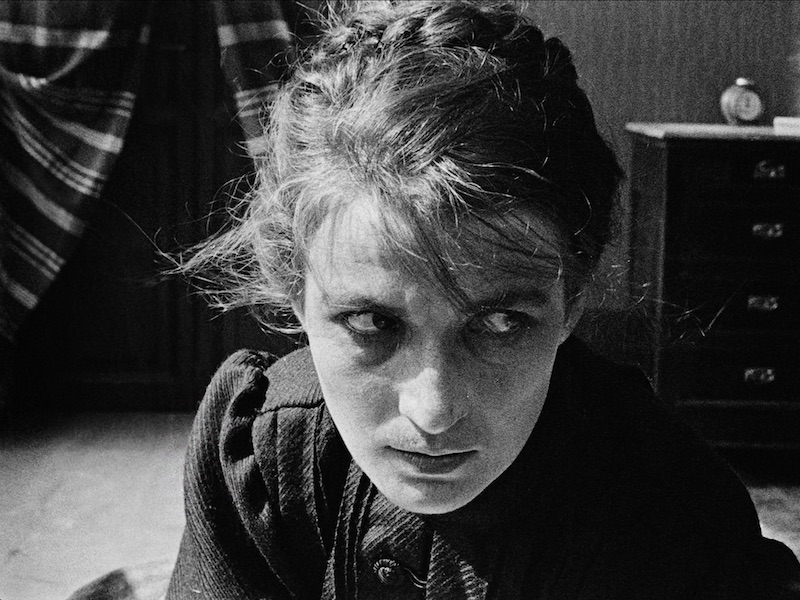LA MORTE CHE ASSOLVE
Alberto Carlo Lolli (IT 1918)
“In just five films, Elettra Raggio has surprised us, succeeding in holding our attention and admiration, and establishing herself! How has she done it? So many silent divas […] have made themselves known […] through their beauty, or sumptuous dresses, or power of expression. But that is of little interest, […] because after ten years of filmgoing, the public has evolved and refined its tastes. […] What people want today, and justly so, is something essentially superior: in short, not the profession but the art. Elettra Raggio is creating art, and that’s why she’s here to stay.” This eloquent description of her success in La Vita Cinematografica of 1917 confirms the importance of bringing to light her only surviving film.
Raggio was not only an actress, but also a screenwriter, director, and producer – a singular and multifaceted figure in her own time, whose work finally deserves to be accessible and appreciated. Thanks to the research of scholars such as Raffaele De Berti, Vittorio Martinelli, and Elena Mosconi, and documents in the paper archive of the Cineteca di Milano, we know the salient facts of Elettra’s life and career: born in Milan on 21 February 1887 as Ginevra Francesca Rusconi, she made her debut on stage alongside the great Ermete Novelli, and then moved to the cinema for good in 1915 with La cattiva stella (Milano Film). She promptly took on the triple role of screenwriter-actress-director with the short feature Le due seduzioni, which was followed in 1916 by Verso l’arcobaleno, directed by Eugenio Perego. In 1916 Raggio’s sense of both art and business led her to found a production company, Raggio Film, and she produced and appeared in Galeotto fu il Mare! and Primavera, both directed by Achille Mauzan.
Another important film was the family melodrama Automartirio (1917) directed by Ivo Illuminati, in which Elettra appeared with her sister Maria. The subject of family morals recurs in La morte che assolve, released in the following year. She wrote and acted in three other titles in the late years of her film career: Miracolo d’amore (1919, directed by Ivo Illuminati), La valanga (1919, directed by Francesco Bertolini), and San-Zurka-San (1920, co-directed with Emilio Roncarolo). Elettra Raggio died in 1973.
In La morte che assolve, directed by Alberto Carlo Lolli, we see her in two roles: Maddalena, a mother repudiated by her cruel husband Falco, a professional loan shark, and their daughter Erica, who is adopted by an American lady. As an adult, Erica is subjected to the advances of Count Giancarlo, who had once saved her life, and has to face a distressing encounter with the father who abandoned her. Melodrama brings out family values, and the supreme value of love. Falco is played by Ermete Novelli, a hugely popular stage actor who offers conclusive proof of his talent on screen, with gestures and facial expressions reduced to the essential. For her part, Raggio does not embody any of the diva canons of the time and avoids the stereotype of the submissive mother: sick and worn down by unfavourable circumstances, Maddalena makes her final exit due to natural causes, not some ultimate sacrifice for her daughter. On the other hand, she doesn’t come across as a femme fatale, instead expressing herself in the role of Erica as a young woman who neither dominates nor casts a spell. If anything, she is modern.
Raggio’s acting style is natural, without excessive emphasis on gesture, almost recalling Eleonora Duse in Cenere. Unlike Duse, however, Raggio never shuns the camera, rewarding us with a pair of intense close-ups and even a knowing glance at the camera. Yet the fact that only one film has come down to us proves that notwithstanding positive reviews she never succeeded in establishing herself in the eyes of the public as incomparable, or as the embodiment of hidden desires and ideals, like other actresses. Whereas a typical feature of Italian silent divas was their immediately recognizable screen identity (with gestures, looks, or emotional states repeated in different stories), leading to the creation of a “legend”, Raggio preferred a variety of roles, which allowed her to convey a multiform expressiveness that was rare at that time. Hers is an elitist cinema, in a sense, certainly more sophisticated and measured, and something to be appreciated now more than it was in the past.
The Restoration The MicLab of the Fondazione Cineteca Italiana made a 2K scan of the original nitrate negative. The surviving material measures 980 metres, compared to the 1300 on the censor’s certificate, which included the intertitles, missing in the negative. These have been added making use of the plot as found in the censorship text. Colours have been reconstructed by studying fragments of other Raggio Film productions given by Elettra Raggio to the Fondazione Cineteca Italiana in the 1950s.
Frida Bonatti


regia/dir: Alberto Carlo Lolli.
scen: Francesco Serravalle.
photog: Mario Bacino.
cast: Elettra Raggio (Maddalena; sua figlia/her daughter Erica), Ermete Novelli (Falco), Ettore Piergiovanni (conte/Count Giancarlo Della Croce).
prod: Raggio-Film, Milano.
riprese/filmed: 1918.
v.c./censor date: 01.07.1918 (n. 13813).
première: 15.02.1919 (Roma).
copia/copy: DCP, 50’15” (da/from nitrate neg., 980 m.; imbibito/tinted); did./titles: ITA.
fonte/source: Cineteca Italiana, Milano.




